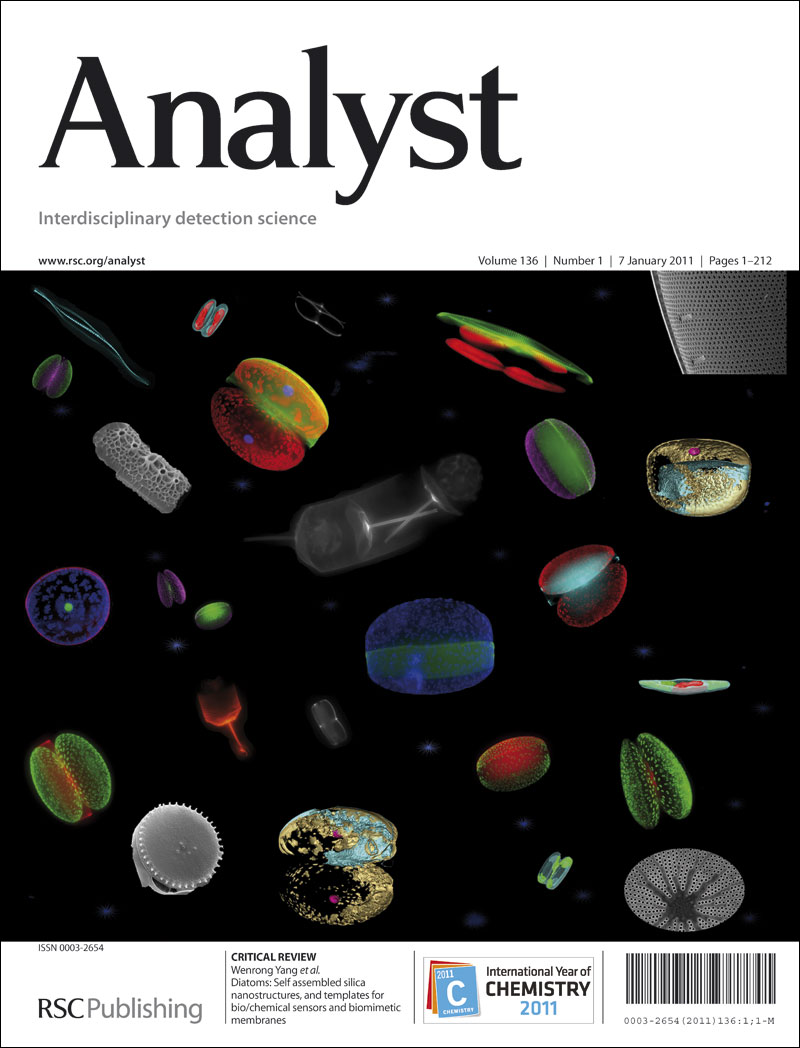Metal-organic frameworks (MOFs) based separation columns: fundamental study for molecular recognitions and potential for separation of linear polymers with close terminal structure
IF 3.6
3区 化学
Q2 CHEMISTRY, ANALYTICAL
引用次数: 0
Abstract
We report stationary phases using metal-organic frameworks (MOFs) composed of metal ions and organic ligands in HPLC. We mainly applied [Zn2(1,4-ndc)2ted]n (ZnJAST4) (ndc: naphthalenedicarboxylate, ted: triethylenediamine) for the stationary phase. To inspect how metal ions and organic ligands affect retention behavior, three different types of MOF, [Cu2(1,4-ndc)2ted]n (CuJAST4) substituted from zinc ions of ZnJAST4 to copper ions, [Zn2(1,4-bdc)2ted]n (ZnJAST1) (bdc: benzenedicarboxylate) substituted from a part of naphthalene of ZnJAST4 to benzene, and ZnJAST4 were packed to columns, and then HPLC using benzene derivatives was conducted to evaluate the recognition ability toward functional groups and shapes of molecules using hexane as the mobile phase. The result revealed that the retention behavior depended on various factors such as halogen bonding, π stacking, molecular shapes, and molecular sizes. Furthermore, to evaluate retention selectivity toward functional groups, HPLC analyses were conducted with a ZnJAST4 packed column in a mobile phase, N,N-dimethylformamide (DMF), using poly(ethylene glycol) (PEG) derivatives, which have different polar terminal groups, as analytes. The result showed that when the polarity was low, the retention to ZnJAST4 decreased, and the retention behavior was affected by the molecular weight of the PEG.基于金属有机框架(MOFs)的分离柱:分子识别的基础研究和具有紧密末端结构的线性聚合物的分离潜力
我们报道了在HPLC中使用由金属离子和有机配体组成的金属-有机框架(mof)固定相。我们主要采用[Zn2(1,4-ndc)2ted]n (ZnJAST4) (ndc:萘二羧酸盐,ted:三乙二胺)作为固定相。为了考察金属离子和有机配体对保留行为的影响,本文研究了三种不同类型的MOF, [Cu2(1,4-ndc)2ted]n (CuJAST4)从ZnJAST4的锌离子取代为铜离子,[Zn2(1,4-bdc)2ted]n (ZnJAST1) (bdc:将ZnJAST4的一部分萘取代为苯,并将ZnJAST4填充到柱上,然后采用苯衍生物高效液相色谱法,以己烷为流动相,评价其对官能团和分子形状的识别能力。结果表明,卤素键、π堆积、分子形状和分子大小等因素均影响了分子的保留行为。此外,为了评估对官能团的保留选择性,使用具有不同极性末端基团的聚乙二醇(PEG)衍生物作为分析物,在流动相N,N-二甲基甲酰胺(DMF)中使用ZnJAST4填充柱进行HPLC分析。结果表明,当极性较低时,对ZnJAST4的保留率降低,保留行为受PEG分子量的影响。
本文章由计算机程序翻译,如有差异,请以英文原文为准。
求助全文
约1分钟内获得全文
求助全文
来源期刊

Analyst
化学-分析化学
CiteScore
7.80
自引率
4.80%
发文量
636
审稿时长
1.9 months
期刊介绍:
"Analyst" journal is the home of premier fundamental discoveries, inventions and applications in the analytical and bioanalytical sciences.
 求助内容:
求助内容: 应助结果提醒方式:
应助结果提醒方式:


